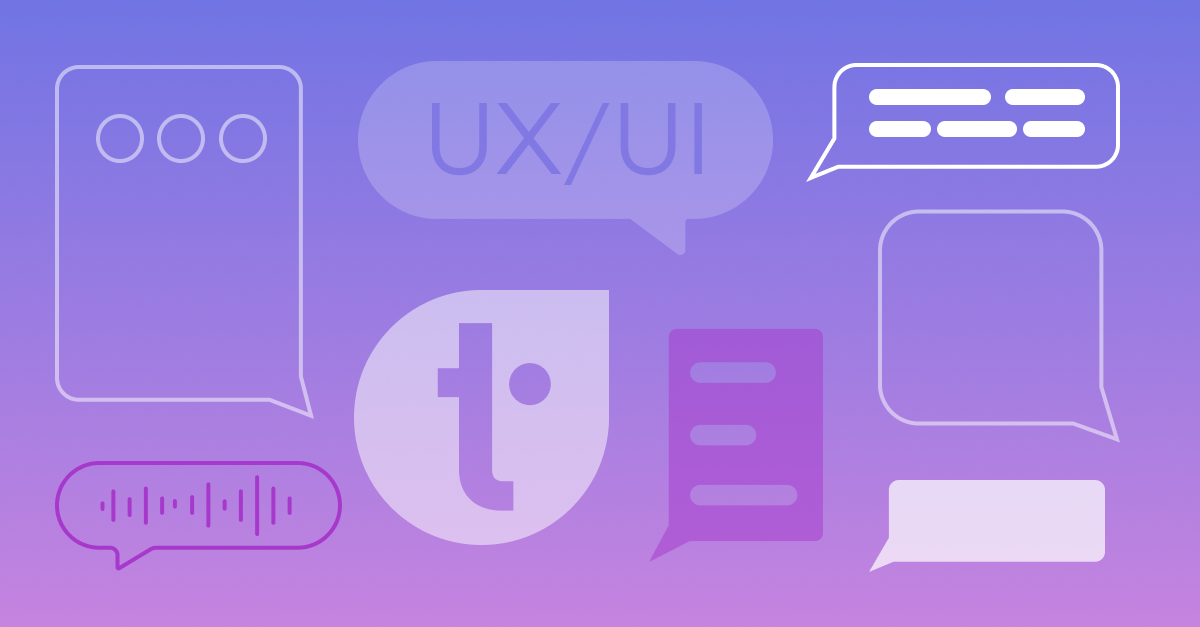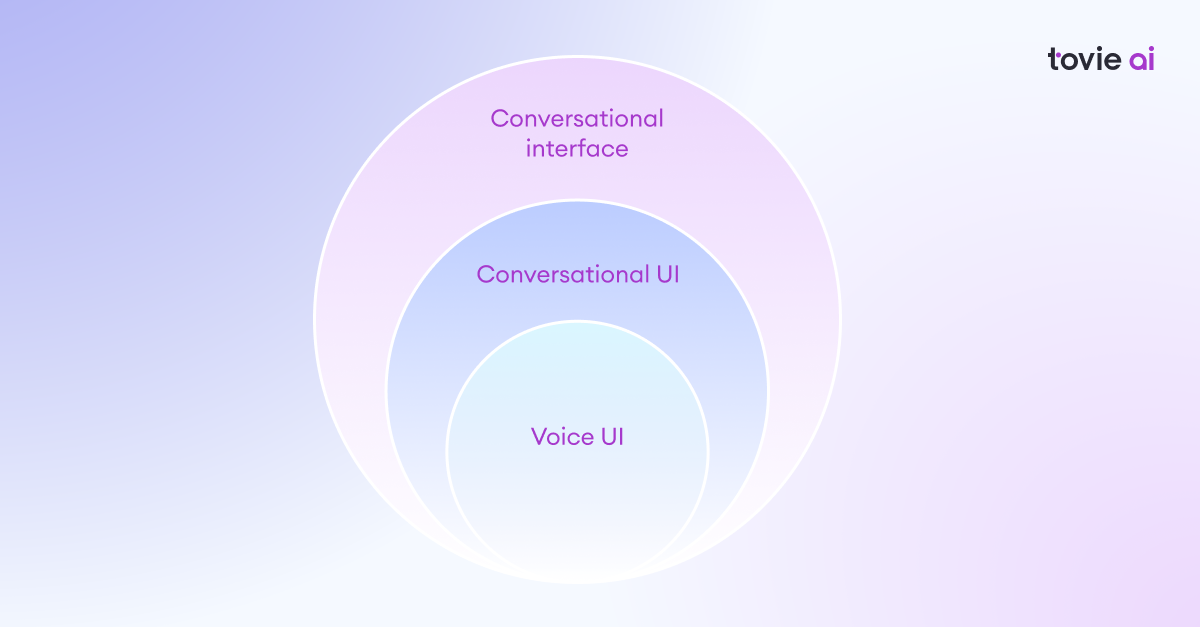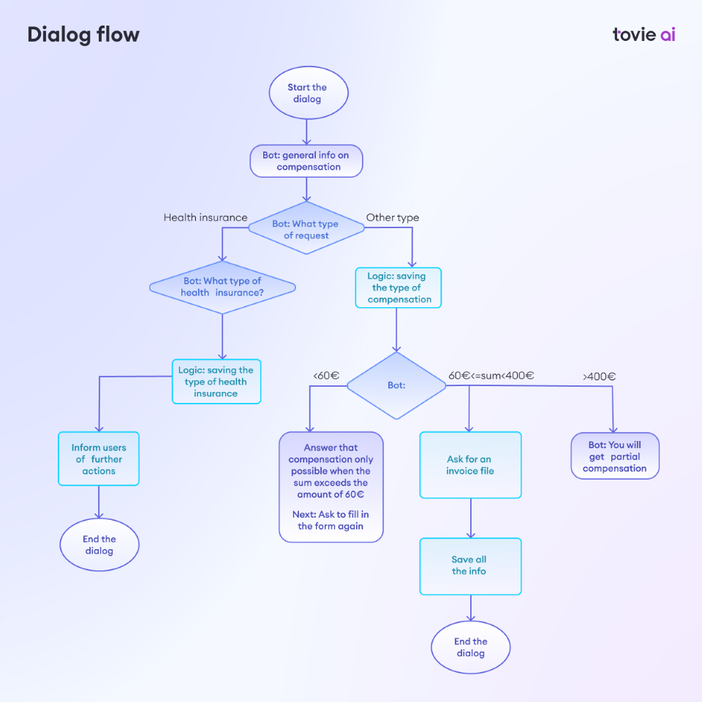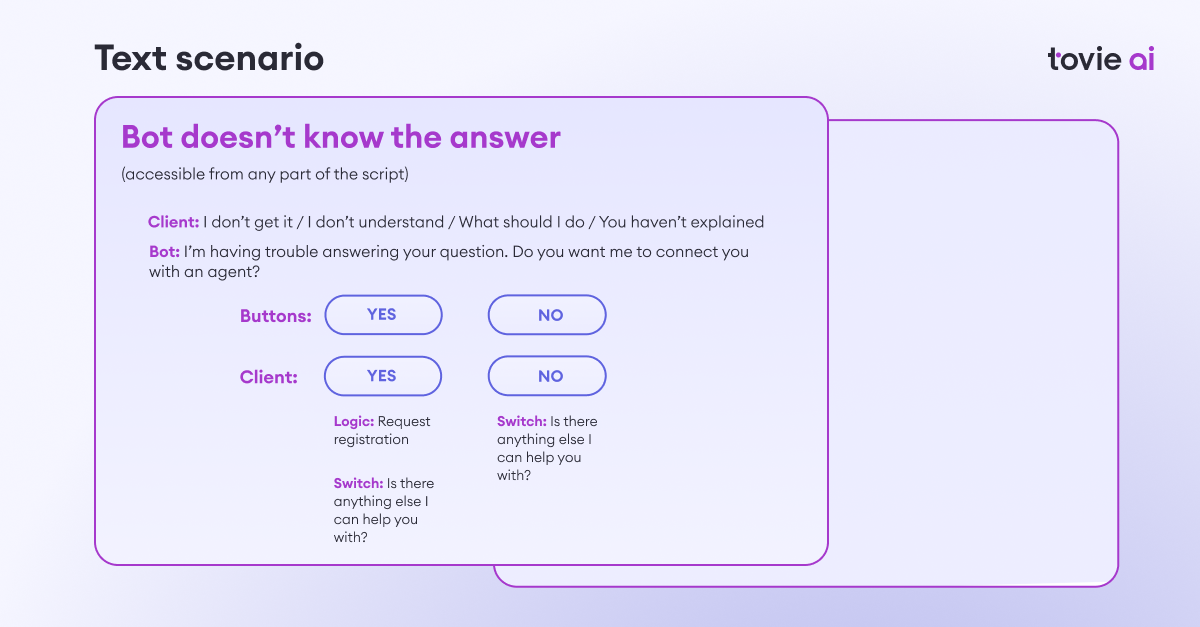Conversational UX/UI Explained: Design Perfect Chatbots and Voice Assistants
July 21, 2022
6 min read

Conversational agents like chatbots and virtual assistants are becoming an integral part of our lives on many different levels. A 2021 study by Voicebot.ai discovered that 60% of marketing experts surveyed thought voice assistants would make a great marketing channel. Many businesses rely on conversational technology to promptly address user queries, grow direct sales, and increase customer loyalty.
Here we’ve put together the most important insights gathered over the years of designing voice assistants and chatbots. We’ll explain how to make conversational services user-friendly and create smooth bot flows, starting from the simplest and gradually moving to the more complex. So, if you’re already familiar with the basics, feel free to move to a more advanced level.
Beginner: Dialog UX/UI basics
What is UX? As the name suggests, UX — short for user experience — is the way users experience services, systems and products and interact with them. As one might guess, UI — or user interface — is the point of that very interaction.
Thus, Conversational UX, is how users communicate with other people and conversational interfaces, aka Conversational UI, that include chatbots and virtual assistants. Be it playing voice games, using in-car voice controls or voice search, messaging to virtual assistants, anything can be part of the dialog here — voice-based and text-based information input/output, dialog boxes, pop-up windows — you name it.
There are two types of conversational interfaces: Conversational User Interfaces (CUI), which comprise both text- and voice-based interfaces where users communicate in natural language. At the same time, Voice User Interfaces (VUI) are part of the CUI concept, which implies voice-only interaction with devices.
So, Google Assistant in a Google Home smart speaker is an example of voice UI (or VUI), while Google Assistant in a smartphone that understands both text-based and voice-based commands is conversational UI (CUI). And either one is a conversational interface.

Who’s behind the chatbot UI?
People whose job is to build conversational interfaces are called conversation designers, conversational UI designers, or voice UX designers. The industry is still relatively young, so there are no established definitions or job descriptions, but here you can find out more about a career in conversation design.
A conversation designer makes interactions with chatbots and voice assistants more humanlike. They think through the bot’s logic, list all possible interaction topics, design the bot’s navigation and consider potential difficulties. Also, a good conversation designer needs to think beyond a happy path and make sure the chatbot UI matches its personality.
Advanced: Building conversational user interfaces
Make sure conversational interfaces are a good fit for your tasks
Address this checklist from Google and tick whatever boxes feel right for you. The more boxes you tick, the greater the chance conversational interfaces are what you need:
- Users already have human-to-human conversations about this task or topic
- The interaction is brief, with minimal back-and-forth dialog
- Users would have to tap multiple times to complete the task with a screen
- Users might have to navigate multiple apps or widgets to complete the task with a screen
- The feature is difficult or cumbersome to find
- Users can do this task while multitasking
- Users can do this task when their hands or eyes are busy
- Users feel comfortable talking or typing about this topic
Please, bear in mind that there are situations and venues not suited for voice-powered interfaces
1. Public spaces: background noises may complicate speech recognition and the voice assistant will likely fail to define user intents.
2. Uncomfortable surroundings: sometimes using a voice interface is inappropriate, e.g. when users are surrounded by other people or find themselves in a place where noises are prohibited.
3. When texting is preferable: some users find it more convenient to communicate by texting and never use voice commands. In this case, you should provide text-based interfaces to them.
4. Privacy concerns: Sometimes user-to-bot interactions imply providing personal information. Using a voice interface would violate user privacy, so you must use a text box here.
Create a viable user persona
Once you’ve decided what kind of conversational interface you will create, it’s time for the chatbot design. First, you need a user persona — a short and detailed description of a user who will interact with the conversational interface.
There can be more than one — the more you understand about the target audience, the dialogs you can create. Before you start building a script, answer the following questions:
- Who are your users?
- What do they want?
- What difficulties do they experience?
- How are they trying to fix them now?
- How do they describe their problems?
- What words or phrases do they use?
- What do you know about the context of these problems?
Think about the tone of voice
How your chatbot or virtual assistant will communicate with users. Will it sound formal? Will it allow for a little chit-chat? Will it make jokes?
To define the right tone of voice, go through the resources your audience frequently visits — communities on social media, magazines, media outlets, and forums. However, when building a virtual agent for a company, make sure its tone of voice goes in line with corporate policy.
The tone of voice affects the way users feel about the conversational agent
Hey, Ann! Check out our new pricing plans — there’s something cool for you!
or
Hello, Ann! We’d like to inform you that from 7/10/2022 our pricing plans will change. Please address the respective section of our website for more details.
Some rules help design effective dialogs, such as Grice’s Maxims. Based on the cooperation principle by British philosopher Herbert Paul Grice, these rules for making a conversation are equally important both for AI-powered voice assistants and basic Facebook Messenger bots.
- The maxim of quantity. Provide just the right amount of information as necessary: no more, no less.
- The maxim of quality. Always fact-check the information you provide, and never share anything that is not supported by evidence.
- The maxim of relation. Stick to the point and say only what’s relevant to the discussion.
- The maxim of manners. Be clear and concise, and avoid vague statements.
Following these maxims will help you design a smooth bot flow

Design a chatbot script
The bot script is a document that lists sequences of text or voice messages depending on user intents and choices. You need a tool like Voiceflow, Chatflow or DialogStudio to write and edit bot scripts.
Start with a happy path — a default scenario where user-to-bot interaction goes smoothly from start to finish — then think about everything that could go wrong: additional questions, clarifications, and difficulties.
Write down the detailed script
With the user path and desired tone of voice in mind, write down the detailed bot script. Once they become a piece of code, parts of this dialog will become real replicas of the conversational agent. In the example below, you can see what happens when the bot struggles to respond:

Create a prototype
Now that you’ve done all the previous tasks, you can start designing a prototype. This way you’ll test your hypotheses, optimise navigation, and see how your text is perceived in a channel. Usually, a UX designer who specialises in conversational UI does that part.
UX design is not just about buttons, but rather emotional and sensory experiences that help solve users’ problems. Naturally, a chatbot script in a Google doc cannot deliver such experiences, so be sure to test your ideas with a good prototype.
Use DialogStudio by Tovie AI to Test These Tips
Sign up for Tovie AI newsletter
Get the latest posts and fresh analytics delivered straight to your inbox



